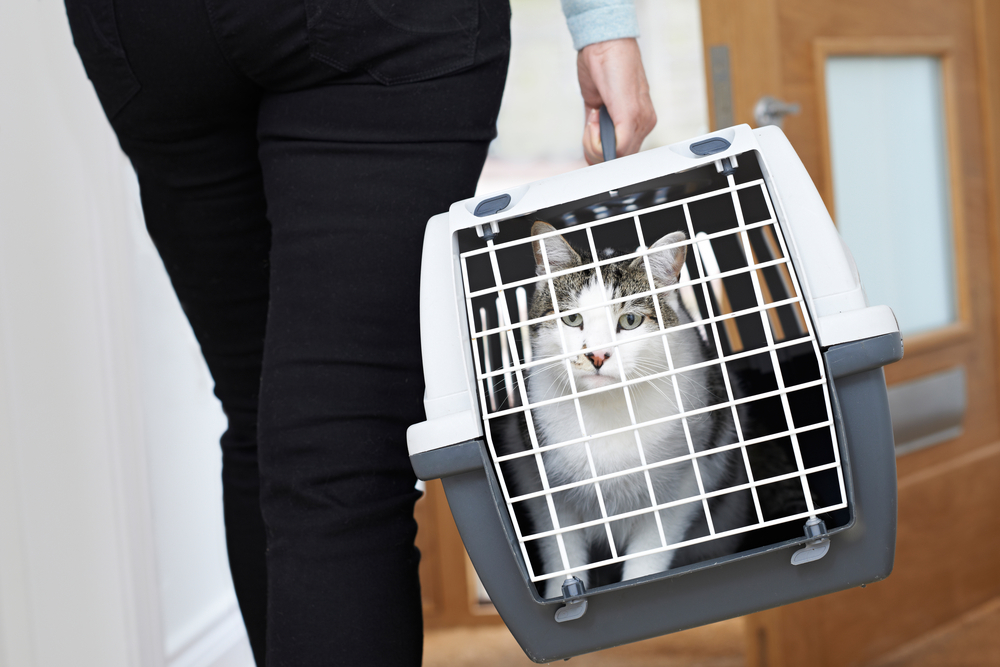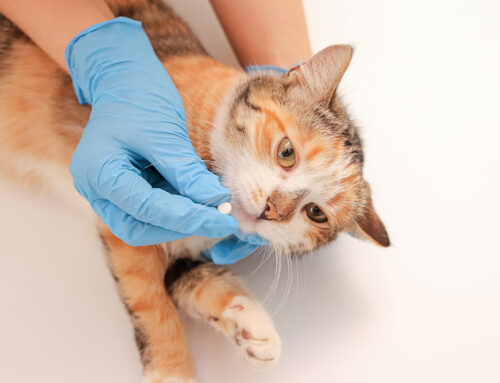When you need to travel and aren’t able to bring your pet, you may have friends or family that can step in and care for them, but pet boarding is another viable option. Boarding your pet can be a nerve-wracking experience, especially if it is your pet’s first time, but with some preparation and planning, you can ensure your four-legged friend has a safe and comfortable stay while you are away. Our WesVet Animal Hospital team answers your frequently asked questions about pet boarding to help you and your pet prepare for your time apart.
Question: What is pet boarding?
Answer: You board your pet when you leave them at a professional facility with staff trained to care for your furry pal while you are away. A boarding facility provides your pet with care, food, exercise, and accommodations for sleeping and relaxation. Some boarding facilities offer short-term care, similar to day care, while other facilities offer pets overnight and longer stays. Pet boarding facility category names vary, including titles such as boarding kennels, doggy day cares, pet hotels and resorts, and veterinary boarding kennels. No matter a facility’s name, you should always look for a reputable organization with trained, certified staff.
Q: How can I find the best boarding facility for my pet?
A: Knowing that your pet is safe and comfortable while you are away gives you peace of mind and alleviates your stress. Finding the best boarding facility for your pet can be a daunting task. Follow these tips to make the best choice for you and your pet:
- Ask for recommendations — Ask friends, family members, or your veterinarian for recommendations. Because of their familiarity with a particular facility, they can provide you with valuable insight.
- Read reviews — Look for boarding facilities online and read pet owners’ reviews. These testimonials can give you an idea of what to expect and help you identify potential red flags.
- Verify accreditation and licensing — Ensure the boarding facility you choose is licensed and accredited by a relevant organization, such as the Pet Care Services Association (PCSA). Accrediting organizations require that licensed facilities meet certain animal care and safety standards.
- Visit the facility — Before making a decision, visit the boarding facility in person. Take a tour, paying attention to cleanliness, safety features, and staff demeanor. Ask about the facility’s policies and pet care procedures.
- Consider your pet’s needs — Different facilities offer various accommodation types and services. Consider your pet’s specific needs, and choose a facility that can fulfill them. For example, if your pet requires medical attention or medication, look for a facility whose staff members have been trained in providing such care.
Q: How do I prepare my pet for boarding?

A: Preparation is key to helping make your pet’s experience comfortable. To prepare your pet for boarding, follow these tips:
- Ensure your pet is up-to-date on their vaccinations — Vaccination is the most cost-effective and safest way to prevent disease spread. Check your pet’s records, and contact your veterinarian to ensure your furry pal is up-to-date on their vaccinations. A reputable boarding facility may require the following vaccines:
- Distemper, adenovirus type 2, parvo, parainfluenza (DA2PP)
- Rabies
- Leptospirosis
- Bordetella
- Canine influenza
- Introduce your pet — Take your pet to the boarding facility before their stay to familiarize them with the surroundings and staff. Doing so can help ease their anxiety and their transition to boarding.
- Reduce your pet’s boarding stress – Some pets, especially those with anxiety, may have a more difficult time adjusting to an unfamiliar environment, in addition to the stress they feel being separated from you. To reduce your pet’s anxiety and provide them with a comfortable boarding experience, follow these tips:
- Use pheromones — Sprays containing appeasing pheromones send the same messages to your pet that their mothers used to comfort them when they were young. Pheromones can provide your pet with an added sense of security and calm.
- Try a calming vest — Consider dressing your pet in an adjustable wrap, such as a ThunderShirt, which applies constant, gentle pressure to their body, and may help manage their anxiety.
- Medication — Ask your veterinarian about ways to help alleviate your pet’s stress and anxiety. They may suggest administering calming supplements or medication to help manage your pet’s anxiety while you’re away.
Q: What should I pack for my pet’s boarding stay?
A: When packing for your pet’s boarding stay, provide them with the essentials they need to feel comfortable and happy while you are away. Be sure you include the following:
- Food and treats — Avoid upsetting your pet’s gastrointestinal (GI) system by ensuring you give the boarding facility enough of your pet’s regular food to last the duration of their stay. In addition, remember to include special treats they enjoy.
- Medications — Provide the boarding facility with an ample supply of your pet’s medication in the original prescription bottle, and leave clear dosage instructions.
- Leash and collar — Ensure your pet has a leash and collar with up-to-date identification tags.
- A favorite toy — To help keep your pet entertained during the stay, pack their favorite toy and a few new ones. However, leave toys that require supervision, such as rope toys or small chew toys, at home.
- Something with your scent — To provide your pet with a comforting reminder of home, provide the boarding facility with a small blanket or towel that smells like you.
By taking the time to prepare your pet, you can ensure their boarding experience will be safe, comfortable, and positive. Contact our WesVet Animal Hospital team to schedule your pet’s preboarding wellness examination, or to ask for boarding facility recommendations.







Leave A Comment